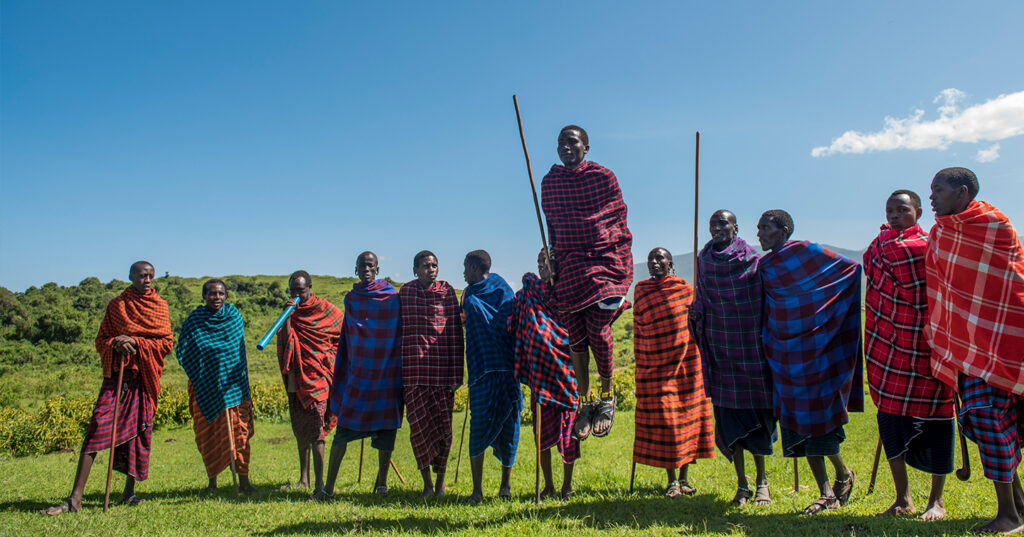Welcome to Kenya
Know more about Republic of Kenya
About Republic of Kenyan
There is a lot more to Kenya apart from being the motherland of former American President, Barrack Obama. Thanks to its location in the tropics of East Africa, Kenya’s 580,367 km² landscape is packed with lots of astonishing contrasts that sums up many travelers dreams. These include rugged Savannah plains with spectacular wildlife, countless forests with an endearing bird life and endless miles of pristine beach on the Indian Ocean shoreline. Simply put, Kenya is like an irresistible candy. When you have it, you will never say never. On the contrary, you will keep coming back for more. That’s exactly why over 500,000 tourists make countless return visits to it annually. This former colony of Britain is blessed with an extensive scope of the world’s second largest freshwater Lake Victoria, pleasant, warm tropical weather, and a rich, diverse cultural heritage. In brief, Kenya is the “Safari Capital of the world”. If you wish to behold the beauty of Africa from it’s second highest peak, Destination Kenya will make your dream come true at it’s Mountain Kenya. It is a snow capped paradise for hikers, soaring at 5,199 metres above sea level.
Since the 1990’s, the royalty, aristocracy, politicians and movie stars have flocked there to hunt the “Big Five'(lion, rhino, buffalo, elephants and Leopard). Today Kenya boasts an incredible 56 national parks and reserves. Kenya’s key attractions include the famous big five, the fabulous sugar pink flamingos found in the rift valley lakes of Nakuru, Bogoria, Elementeita and Magadi. The Masai people have captured the imagination of the world with their red cloaks, proud demeanor, mystic love of their cattle and intricate bead work.
Masai Mara is Kenya’s most famous national park and the scene of the world-famous annual migration of the wildebeest. Kenya’s Indian ocean beaches are ranked among the top ten in the world while her stunning array of marine parks offer coral gardens, rainbow fish and water that is warm and clear all year. Not forgetting the unique Swahili culture of the Kenyan coastline, a colourful fusion of Arab, African and Portuguese influences, has created a pace of life, a style of cuisine and a mosaic of architecture, heritage, myth and magic that is unique.
With over 7 years experience in organizing Kenya Holiday Packages, Umoja prides in being one of the East Africa Tour operators that can’t to treat you wonders of this magical destination.
Best time to visit; Wildlife viewing is fruitful throughout the year. However you want the most spectacular sightings, the Dry season from late June to October is great for wildlife viewing. In July, wildebeest migration climaxes in Masai Mara and remains until October when they migrate back to the Serengeti in Tanzania.
Top Destinations to Visit in Kenya
Set between Mt Kenya and the Rift Valley in Kenya’s Central Highlands, Aberdare is a phenomenal place to absorb the wildlife wonders of our planet. This 767 sq kms paradise is found high in the clouds, at an altitude from 1829m to 4001m above sea level.
It is made of forested ravines, rolling Savannah, bamboo forest, scenic waterfalls, open moorland. This contrasting landscape offers refuge for all kinds of animals inclusive of those hardly seen elsewhere, like a a black leopard and elusive bongo. Other multitude of wildlife found here include elephants, buffaloes, black rhinos, leopards, bushbucks, spotted hyenas, olive baboons, warthogs, black and white colobus monkeys and on and on. The most notable of its 250 recorded bird species include goshawks, jackson’s Francolin, plovers, Sparrow hawks, eagles and sunbirds.
In the moorland zone, you stand chances of encountering Melanistic serval cats above the tree line.
Aberdare has multitudes of rare sightings inclusive of African civet cat, Giant Forest hog, African wild cat, bongo, blue duiker and golden cat.
There are lots of cozy places where you can indulge in picnics, rivers where you can go trout fishing and moorlands where you can pitch a tent and camp. The bonus is views of sunrise and sunset on Mount Kenya.
The park is fenced off in an effort to protect its elephants from poachers. Samburu is also home to Kenya’s oldest lodge, Treetops lodge. Its where princess Elizabeth was staying in 1952 at the time her father died.
Travel Tip
Carry with you a rain coat. It can start raining anytime.
Samburu is a big 5 haven set in the motherland of Samburu, a tribe of cattle keepers found in a semi-arid corner of Kenya. A visit to this wildly beautiful and mountainous highland offers a nice change from the usual wildlife. It’s “Special Five” include dry-country specials like Somali ostrich, Grevy’s zebra, gerenuk, reticulated giraffe and beisa oryx, all of which are readily seen. One of the biggest highlights of Samburu is the sight funny looking gerenuk standing on their hind legs in search for food.
On the South, Samburu’s harsh environment is neighboured by Ewaso Ng’iro, a river that sustains wildlife during dry season. It owes its constant flow of water to the glaciers melting from Mount Kenya. You can drive to here and pick up a fair amount of game, elephants, lions, buffalos and leopards. As they drink water, their eyes are always glued on large crocodiles basking in the sun.
After drinking water, they retreat to shade of graceful doum palms and riverside acacias as they wait for the sun to cool down.
Bird watching
Samburu is prolific birdlife sanctuary with lots of hornbill species, martial eagle and pygmy falcon, Rosy-patched bush-shrik, Bare-eyed thrush, Secretary bird, Greater kestrel, White-headed mousebird, Mariqua sunbird. The park has over 390 recorded species.
Best time to visit
If you prefer to visit when the park is less dusty, the wet season from October to May is a better bet. During this time, the park is greener.
Wildlife Highlight: forest elephants, bushbucks, tree hyrax, suni, white tailed mongoose, black fronted duiker, waterbucks, elands and mole rat. Animals rarely seen include leopard, bongo, giant forest hog. Birds: Over 130 bird species have been recorded.
What it is like to be here
There is a 99% chance that you will treasure your visit to this destination till your last day on earth.
It features snow caped peaks, stunning scenery and a well-balanced ecosystem. It is not too crowded even in the high peak tourism season. Its climbing experience is well suited for climbers ranging between inexperienced and experienced. The adventure starts from Naromoru park gate (2400 meters ASL) to the Meteorological station (Met) through the forest zone. It is a great starter—full of so much fun! Birds of rare species, water bucks, Columbus monkeys, baboons, springs and bamboo forest was part of the scenery. The sweeping views of the surrounding mountains, valleys and flowers will leave you smiling or even laughing in joy.
In the latter days, you will traverse high alpine zone with its beautiful Giant Lobelia, Protea and Rowelia. This will be followed by the rocky zone. Here there is very little vegetation—most of which have very shallow roots as there is little soil.
The choice is yours on whether to sleep in cabins or tents during the trip.
The team that will be entrusted with looking after you is spot on and absolutely helpful. Having hiked this mountain over twenty times, they know everything it and altitude tricks. The bonus is that they are patient-kind and sensitive to needs climbers. You will have nothing but admiration for their dedication towards helping travelers achieve their dreams of reaching the second highest peak in the continent.
When the adventure is over, you will take a ride back feeling very tired but content with your lifetime achievement.
If you have to choose between visiting Masai Mara, Serengeti, Kruger Park or Tanzania’s Selous Game Reserve, concentrate on Mara.
It is a lively reserve that offers a maiden experience of wild life, with almost guaranteed chances of seeing all the Big 5 animals; Lions, leopards, elephants, buffaloes and leopards. It hosts 95 mammal species and 485 bird species and countless reptiles and amphibians. It is a verdant earthly paradise covering 1,510 km2-which is divided into reserves of a manageable size. It’s vast landscape teams with Savannah grassland that is beautified with stretches of acacia woodlands, rocky hills and forest that is adjacent to rivers.
The park’s annual wildebeest migration has earned itself a top spot among one of the Seven Wonders of the World as it is one of Africa’s most breathtaking experiences. The spectacle usually starts around July and August as 2.5 million wildebeest, gazelles and 250,000 zebras start migrating from Tanzania’s Serengeti National Park to the neighbouring Masai Mara Game Reserve, arriving in September. This ambitious movement is fueled by the need for enough grass in their destination, against the shortage in Serengeti. On exhausting Mara’s supply, they make a U-turn back to their homeland Serengeti in October. All this intriguing drama can be witnessed from the comfort of a hot air balloon or out shaded safari cars which are custom made for honeymoon.
Masai Mara is so big to be explored in less than five days. As such, it is split into a number of private reserves and conservancies that are managed by local pastoral communities, the dominant being Masai.
Travel tip ahead of your trip to Masai Mara
Be sure to carry warm clothing with the reserve is above 5000 ft above sea level. It gets cold here especially early morning and evening. The luxurious camp where will be check you in will provide a hot water bottle in your bed to warm up the night.
A day’s visit to this open elephant kingdom is as good as 10 days in most Kruger National Park. It has an ecosystem like no other in the world. Here, you will see Mt. Kilimanjaro soaring above a forest of acacia trees, with elephants matching past and perhaps a colourful hot air balloon floating beautifully overheard.
It is within easy reach from Nairobi and Mombasa thanks to well tarmacked roads.You will see how very large herds of elephants live together like a family. You will see the circle of their life and you maybe even catch sight of a calf being born.
As the sunset turns to gold in the evening, the air is filled with a fog of dust in which wandering elephants appear as ghostly silhouettes.
What else to expect apart from elephants
Here, the picture of harmony, with so many species of mammals grazing side by side comes to life. In addition to various antelope species, zebras and giraffes, Lions & cheetahs, too, are commonly sighted.
Despite having a small size of 390.26 sq. Km, Amboseli is an iconic birding paradise with 420 recorded species. Among the species which can be seen for every square metre of the park include African swamphen, Yellow-necked spurfowl, Common redshank, Von der Decken’s hornbill, Dickinson’s kestrel, Taveta golden weaver, Eurasian thick-knee, Steel-blue whydah, Greater flamingo, Hartlaub’s bustard….the list goes on.
Masai cultural Tour
Away from wildlife, the other experience that can’t be missed here is a cultural trip to the local manyattas of the Masai tribe for cultural immersion. These tall cattle keepers are often draped in blood-red blankets and love to share their ancient ways of life.
Best time to visit Amboseli
The parks roads get quite messy in the wet season because they are made of earth. In other words, the drier months from June to September offer a more hustle free adventure. Even better, the vegetation is shorter in these months thereby allowing you to spot animals as far as the eye can see.
If you have an appreciation of the wildlife wonders of our planet, You Should Be Here before you die. It is found southwest of the Nairobi-Mombasa Highway and east of Mountain Kilimanjaro.
Tsavo East and Tsavo West were combine in 1948 to create the biggest wildlife estate in Africa, occupying 4% of Kenya’s vast expanse, 20,812 square km. It starts from the foot of the Chyulu Hills and goes down down to the Tanzanian border.
It is made of rugged volcanic hills, dense acacia woodland and black lava flows. This makes it an incredible treasure for photography tours.
If you want a Big 5 adventure in a less crowded park, Tsavo west is a much better choice than Masai Mara. Its extra wow factor is its concentration of black rhinos which can be found in its Ngulia sanctuary.
At the renowned pools of Mzima Springs, you will find a viewing point where you can watch hippos underwater through a thick plate of glass windows. On the other hand, Lake Jipe, which lies on the border with Tanzania hosts lots of elephants, hippo and waterbirds like threatened corncrake, Pied kingfisher, near threatened Basra Reed Warbler and Martial eagle.
The dominant features in Tsavo East is Yatta, a long Plateau that stretches over 300 Kms over a landscape that is as flat as a cake plate. The other is Galana, a palm shaded river that doubles as a meeting point for gerenuk, hippos, crocodile, waterbucks and lesser Kudu.
If you visit the Galana river around mid-day when the sun is hot, you are likely to find dust-red elephants wallowing and rolling in the mud to get rid of ticks and cool down their temperatures. If it’s a wet season when the water is in abundance, you will find males bathing by spraying water on each other to wash off layers of dirt. This is in an effort to impress females.
with the midnight blue waters of palm-shaded Galana River is one of This, along with the 300 kilometer long Yatta Plateau, the longest lava flow in the world, make for an adventure unlike any other in the Tsavo East.
Best time to visit
If you prefer to visit when the park is less dusty, the wet season from October to May is a better bet. During this time, the park is greener. If you visit in the other months, you will leave with memories of clear view of Mountain Kilimanjaro.

